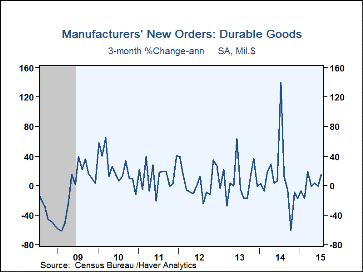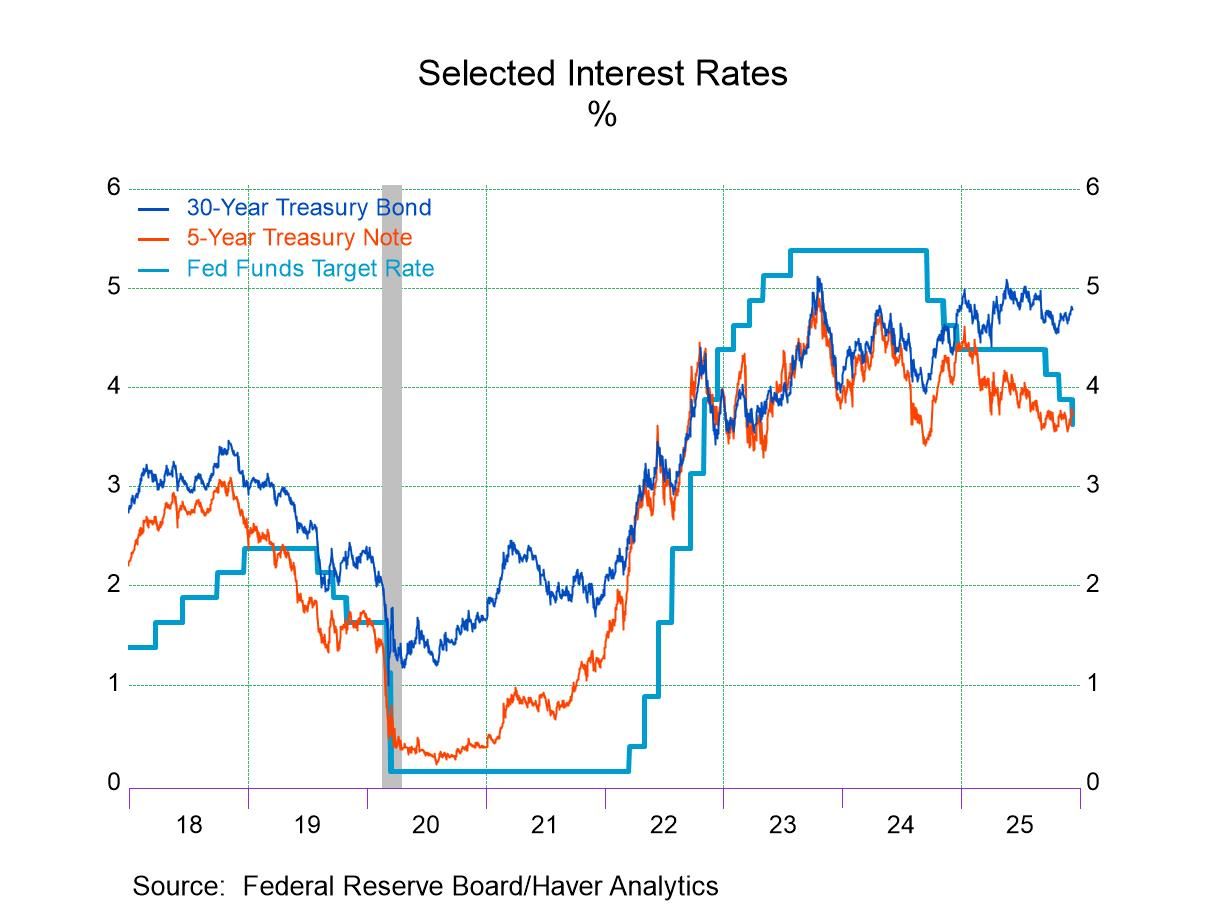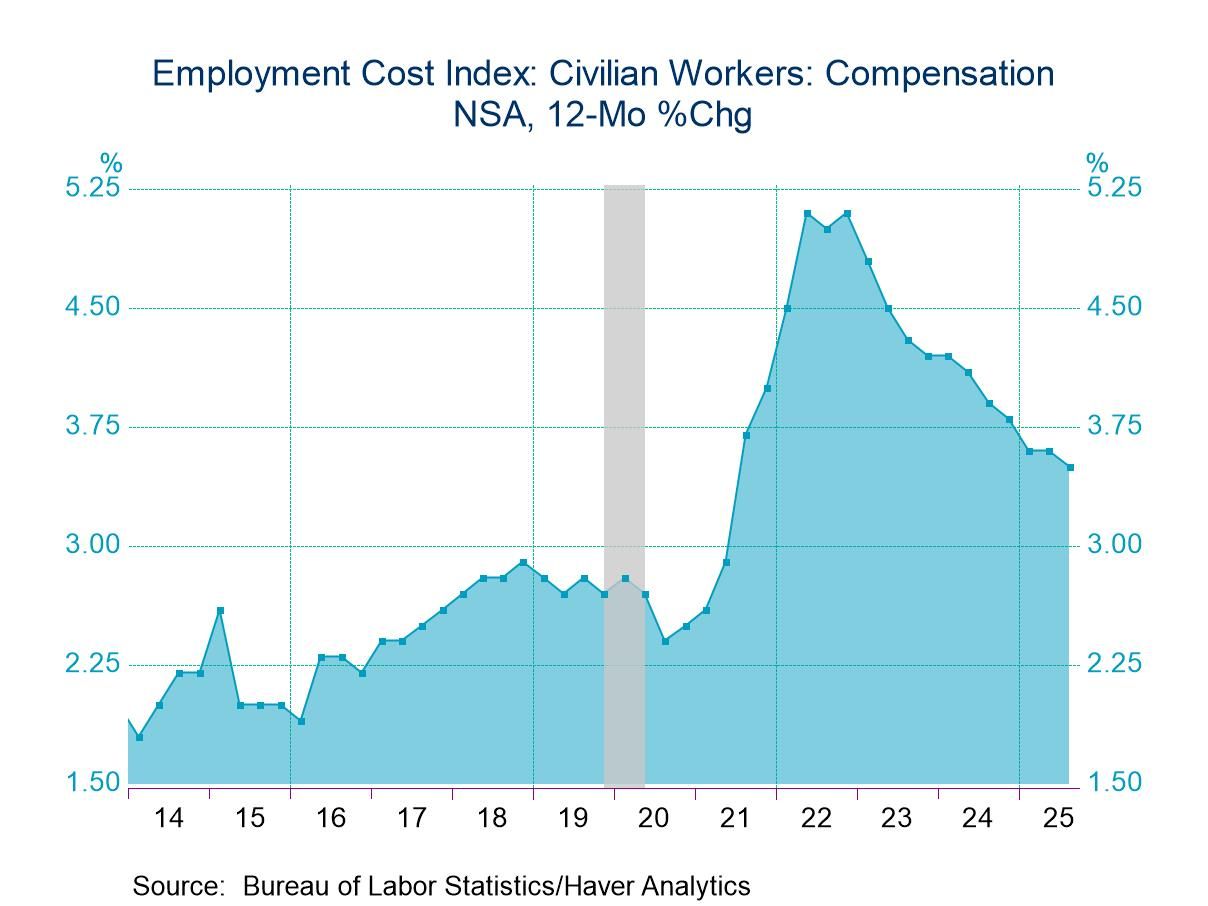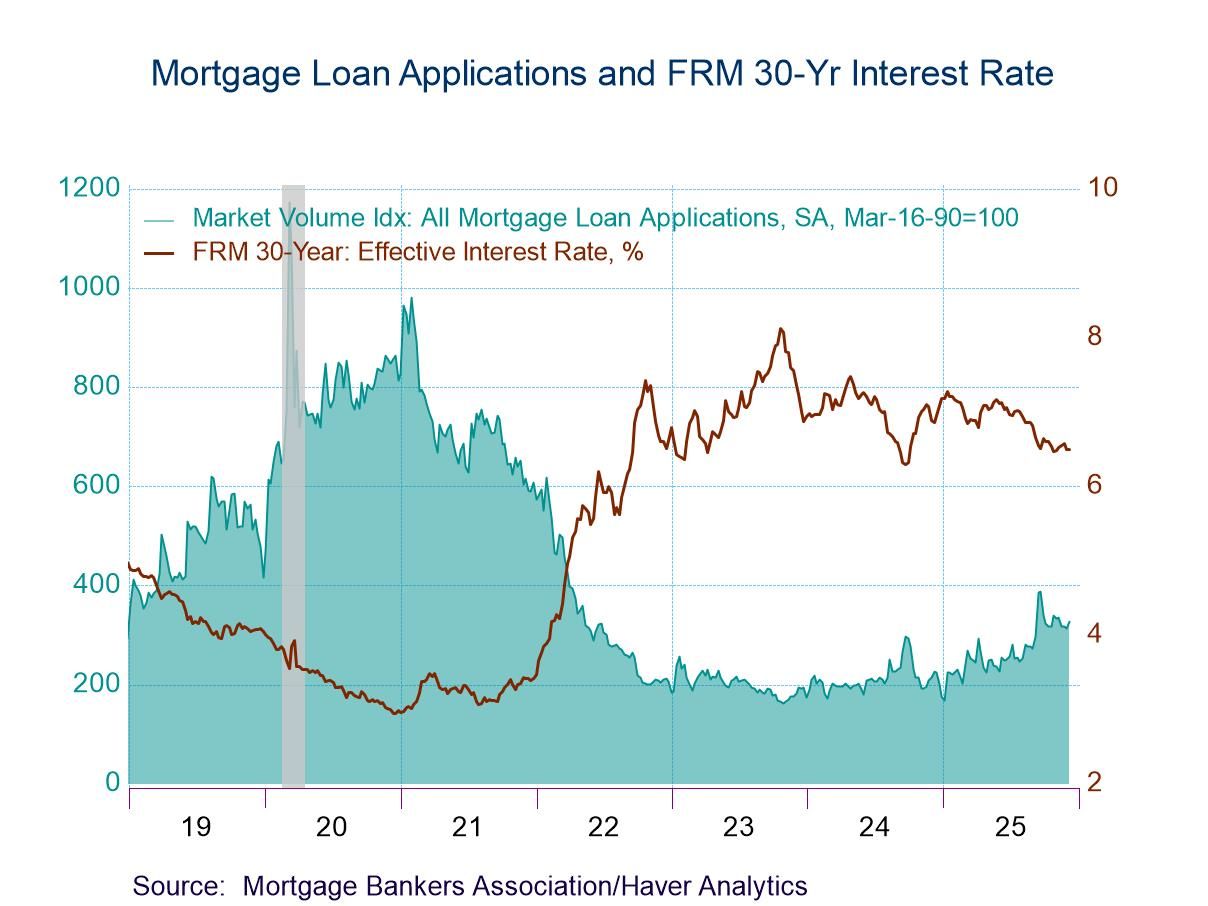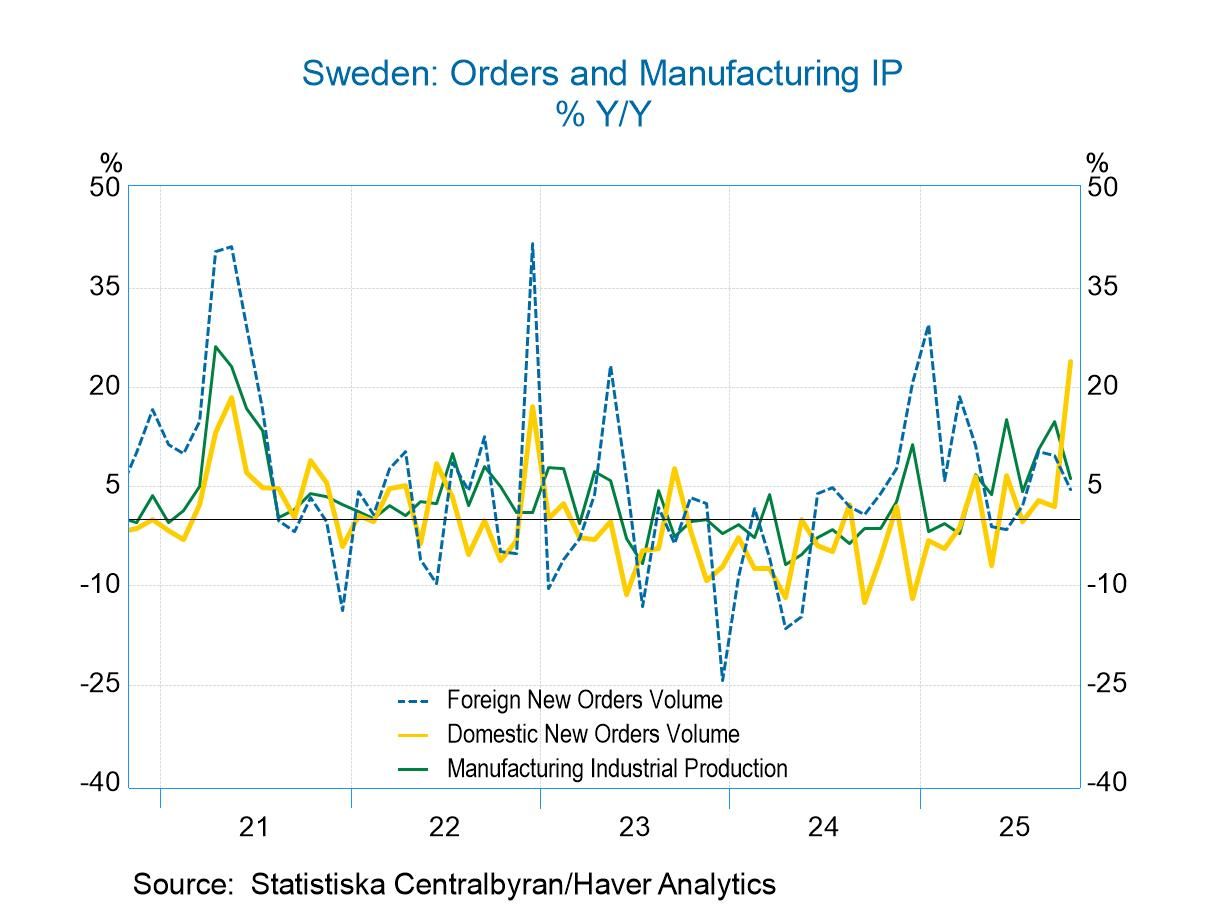 Global| Aug 26 2015
Global| Aug 26 2015U.S. Durable Goods Orders Beat Expectations, Led Higher by Civilian Capital Goods
by:Tom Moeller
|in:Economy in Brief
Summary
The factory sector is moving onto a firmer footing. New orders for durable goods increased 2.0% during July (-19.6% y/y) following a 4.1% June gain, revised up from 3.4%. The increase compared to expectations for a 0.5% decline in the [...]
The factory sector is moving onto a firmer footing. New orders for durable goods increased 2.0% during July (-19.6% y/y) following a 4.1% June gain, revised up from 3.4%. The increase compared to expectations for a 0.5% decline in the Action Economics Forecast Survey. During the last ten years, there has been an 88% correlation between the y/y change in durable goods orders and the change in real GDP.
Last month's strength in orders was powered by a 2.2% rise (-2.3% y/y) in nondefense capital goods bookings outside of the aircraft sector. It followed a 1.4% increase, revised from 0.7%. Overall, nondefense capital goods orders rose 1.1% (-41.0% y/y) following a 10.6% jump. Orders for nondefense aircraft & parts declined 6.0% (-77.8% y/y) following a rise of more than two-thirds in June. Defense capital goods bookings rose by nearly one-quarter m/m and by one-third y/y.
Transportation sector orders increased 4.7% (-39.7% y/y) after a 10.7% gain. Orders excluding transportation increased edged 0.6% higher (-2.5% y/y). Motor vehicle orders increased 4.0% (5.2% y/y).
New orders for computers & electronic products increased 2.0% (7.5% y/y) after two months of more moderate increase. Machinery orders improved 1.5% (-5.1% y/y) and added to a 2.3% rise. Orders for electrical equipment, appliances & components improved 1.3% (-5.0% y/y) after a similar June gain.
Shipments of durable goods increased 1.0% (-0.1% y/y) after a 0.9% rise. Transportation equipment shipments gained 2.5% (3.8% y/y). Shipments excluding transportation edged 0.2% higher (-1.9% y/y) after a 0.4% rise. Unfilled orders improved 0.2% (-0.6% y/y) following no change. Backlogs outside of transportation eased 0.1% both m/m and y/y. Inventories of durable goods eased slightly (+3.3% y/y) after a 0.4% jump. Inventories less transportation also were little-changed (+1.9% y/y).
The durable goods figures are available in Haver's USECON database. The Action Economics consensus forecast figure is in the AS1REPNA database.
Current Federal Reserve Policy Under the Lens of Economic History: A Review Essay from the Federal Reserve Bank of St. Louis can be found here.
| Durable Goods NAICS Classification | Jul | Jun | May | Jul Y/Y | 2014 | 2013 | 2012 |
|---|---|---|---|---|---|---|---|
| New Orders (SA, %) | 2.0 | 4.1 | -2.3 | -19.6 | 6.8 | 2.2 | 6.3 |
| Transportation | 4.7 | 10.7 | -6.3 | -39.7 | 6.1 | 6.5 | 16.6 |
| Total Excluding Transportation | 0.6 | 1.0 | -0.3 | -2.5 | 7.2 | 0.1 | 2.0 |
| Nondefense Capital Goods | 1.1 | 10.6 | -7.1 | -41.0 | 6.6 | 2.8 | 10.8 |
| Excluding Aircraft | 2.2 | 1.4 | -0.8 | -2.3 | 6.3 | -1.0 | 7.6 |
| Shipments | 1.0 | 0.9 | -0.4 | -0.1 | 4.8 | 2.0 | 6.3 |
| Inventories | -0.0 | 0.4 | -0.2 | 3.3 | 6.1 | 2.4 | 3.8 |
| Unfilled Orders | 0.2 | 0.0 | -0.5 | -0.6 | 11.4 | 6.4 | 7.5 |
Tom Moeller
AuthorMore in Author Profile »Prior to joining Haver Analytics in 2000, Mr. Moeller worked as the Economist at Chancellor Capital Management from 1985 to 1999. There, he developed comprehensive economic forecasts and interpreted economic data for equity and fixed income portfolio managers. Also at Chancellor, Mr. Moeller worked as an equity analyst and was responsible for researching and rating companies in the economically sensitive automobile and housing industries for investment in Chancellor’s equity portfolio. Prior to joining Chancellor, Mr. Moeller was an Economist at Citibank from 1979 to 1984. He also analyzed pricing behavior in the metals industry for the Council on Wage and Price Stability in Washington, D.C. In 1999, Mr. Moeller received the award for most accurate forecast from the Forecasters' Club of New York. From 1990 to 1992 he was President of the New York Association for Business Economists. Mr. Moeller earned an M.B.A. in Finance from Fordham University, where he graduated in 1987. He holds a Bachelor of Arts in Economics from George Washington University.


